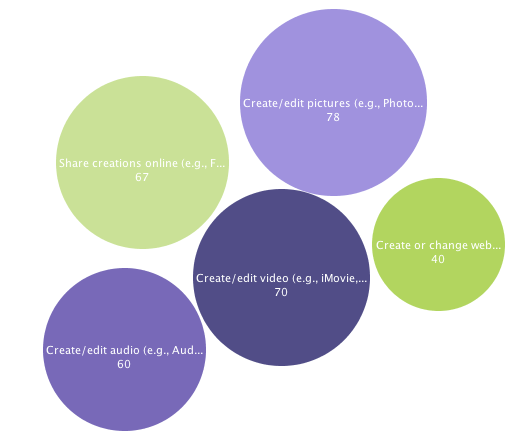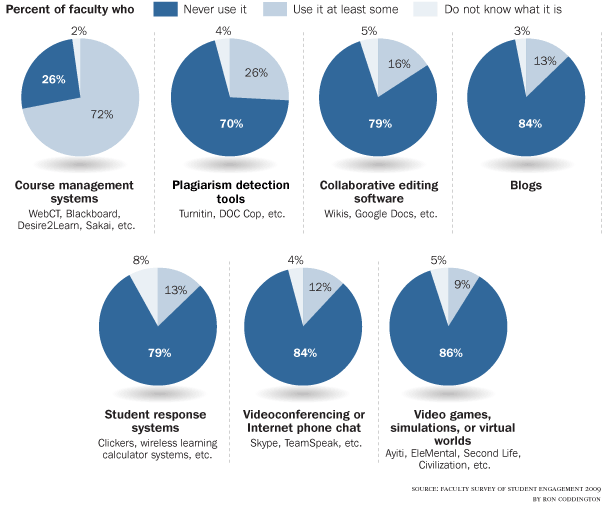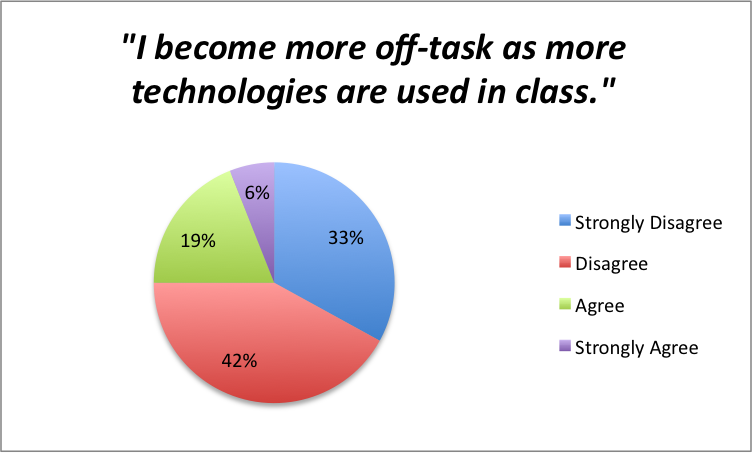TechEdges presents research at AERA 2011 in New Orleans, LA; April 8-9, 2011
My research group is presenting several research papers at the American Educational Research Association’s annual conference in New Orleans, LA. We will be posting our handouts and presentation materials here at this website following our presentations. We would be delighted to meet you. Here are our sessions:
Session 1:
“Degree of Digital Equity in Schools by Race and Socioeconomic Characteristics” by Gloria Gonzales Dholakia, Joan E. Hughes, and Michelle Fulks Read
Friday, April 8, 2011 from 12:00 PM to 1:30 PM
Location: Sheraton Grand Ballroom B
In Session “Issues Associated with Technology in Teaching and Learning”
Abstract: This research examines and compares digital equity at two different middle schools. Focus is placed upon minority student in- and out-of-school technology use to explore the relationship of school characteristics and digital equity. The first middle school is a minority-majority school, with 93% Hispanic and African-American students. The second middle school is a historically white majority school participating in a district student-transfer program with a 50% white and 50% Hispanic/African American population. Digital inequities based on school socio-economic status and ethnicity are presented. Without addressing these unequal opportunities to acquire 21st century skills, educational change cannot be achieved.
Session 2:
“Research Snapshots from 2002-2010 on Preparing Preservice Teachers to Integrate Technology Into Teaching Within a 1:1 Laptop Teacher Education Program” by Joan E. Hughes, Hyojin Yoon, Nikki Wen, and Minwook Ok
Friday, April 8, 2011 from 4:05 PM to 5:35 PM
Location: New Orleans Marriott / Mardi Gras Salon A
In Session: Laptops in Preservice Teacher Education
Abstract: This paper is a compilation of recent research that has been conducted to understand the development of preservice teachers that are enrolled in a technology-rich teacher education program. This program is described as technology-rich to reflect its commitment to a 1:1 laptop environment in which all certification students had their own laptop for their certification studies. This paper attempts support dissemination and scale-up by providing a case of one technology-rich program including its programmatic description and the research base generated from studies set within it. Further, we aim for this work to generate discussion and orientation for future inter-institutional research in technology-rich teacher education.
Session 3:
“An Ecological Case Study of Two Middle Schools’ Technology Integration” by Michelle Fulks Read, Sara Jolly Jones, Joan E. Hughes, and Gloria Gonzales Dholakia
Saturday, April 9, 2011 from 10:35 AM to 12:05 PM
Location: Astor Crowne Plaza / Toulouse A
In Session: Clearing Technology Integration Hurdles in K-12
Abstract: In this series of ethnographic case studies, we utilize mixed methods to examine technology integration at schools that represent differing demographics, geographical locations and technology infrastructure. The first data set, collected from Saguaro Middle School in spring 2009, is compared with data collected from Porter Middle School in spring 2010 in which students, teachers and technology leaders are questioned. Results show wide digital technology usage for web, productivity, communication and creation domains for students and teachers at both schools. However, a large gap exists in the amount of student usage in- and out-of schools. The size of this gap differs between schools. School and district technology leaders rank a variety of elements important to their school’s technology vision.
Faculty use of technology: general faculty (chronicle of educ stats) and in teacher education (our stats)
A report from The Chronicle of Higher Education on faculty’s use of technology yielded the following data:
Image Source: The Chronicle of Higher Education; http://chronicle.com/article/Professors-Use-of/123682; June 25, 2010.
Discussion around these data include questions of whether technology makes a better teacher. Certainly an excellent question! We do not believe that using technology will magically make a teacher a better teacher – in fact, at first, many teachers (and university faculty) may face some hiccups as they learn to teacher in a more student-centered way, as many of these technological tools are best used by students to learn. Faculty do not experience hiccups when they adopt technology in support of the usual, teacher-directed pedagogy that we know very well.
We (Joan Hughes with Gloria Gonzales Dholakia, Yu-Chi Wen, and Hyo-Jin Yoon) have a book chapter currently under review called “The iron grip of productivity software within teacher education.” In the chapter, we discuss the importance of faculty modeling of optimal technology use for preservice teachers, as they learn a lot about what they will do as future teachers from what they experience in their teacher preparation program. Yet, we also describe productivity software’s (tools like PowerPoint, word processing, and spreadsheet suites) enduring grip as the most used digital technologies among preservice teachers during teacher education.
The Chronicle’s data (above) reminds us of the data we have collected from preservice teachers. Clearly, there’s ample room to discuss why productivity is emphasized so much (been around a long time, has affordances across disciplinary areas). But we believe an overemphasis on productivity tools is not adequately preparing new teachers for the knowledge society in which we/they live, work, and educate.
We are not faulting teacher education or PK-12 schools or preservice teachers. But we recommend that this focus will not change without concerted change efforts in both teacher education and PK-12 institutions because change in one won’t really have a ripple effect without simultaneous and complementary change in the other.
A glimpse into our data … reveals the high-use digital technology tools by student teachers in 2004-2007 were: email, presentation, search engine, web browser, word processing, and digital movies (student teachers are required to do a lesson study involving video recording their teaching). Overall, data from our student teacher respondents in 2004-2007 and 2008-2009 reflect a low, but emergent use of minimal Web 2.0 tools such as blogs, podcasts, wiki, and social bookmarking. We feel this is a positive trend toward better preparation of teachers to integrate technology into their future PK-12 teaching, but we feel a necessity for more emphasis and progress.
Determining Teachers’ Digital Technology Self-Efficacy
My colleague, Dr. Jayson Richardson, at the University of Kentucky emailed me inquiring about how we measure digital technology self-efficacy which he saw on some of our slides in SlideShare.
I figured that others might also be interested. I created a PDF of our scale measure which is based off of an earlier measure created by Cassidy & Eachus (2002). We made changes to the language and to some items that we felt were not pertinent once we expanded the notion of “computer” to that of “digital technology.” You can see our measure below with the items. You can download this file on slideshare.
We must acknowledge the good work of Cassidy & Eachus.
Cassidy, S., & Eachus, P. (2002). Developing the Computer User Self-Efficacy (CUSE) Scale: Investigating the Relationship Between Computer Self-Efficacy, Gender, and Experience with Computers. Journal of Educational Computing Research, 26(2), 133-153. http://baywood.metapress.com/link.asp?id=jgjr0kvlhrf7gcnv
Students’ perspectives on technology and distraction
In this data snippet, we explore how technology integration impacts middle school students’ learning and behavior from the students’ perspectives. The students were asked to provide their level of agreement or disagreement with the following statement: “I become more off-task as more technologies are used in class.”
Two hundred eight students were asked this question at Porter MS. As can be seen, a large portion of students (75%) either disagreed or strongly disagreed that the use of technology causes them to become off-task. A quarter of the students surveyed agreed or strongly agreed that their off-task behavior did increase as more technologies were used.
Students Use of Creative Technologies
 In our study, middle school students were asked which types of technologies they participated in at home, school or some other location. The specific technologies they were asked about were divided into four main categories: Communication, Productivity, Web-based and Creative. This bubble chart shows that students are creating and sharing with technologies in a variety of ways.
In our study, middle school students were asked which types of technologies they participated in at home, school or some other location. The specific technologies they were asked about were divided into four main categories: Communication, Productivity, Web-based and Creative. This bubble chart shows that students are creating and sharing with technologies in a variety of ways.

